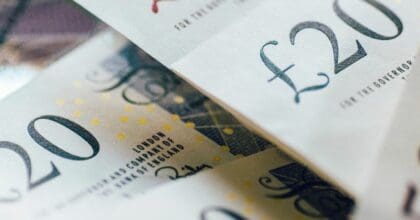268 years. At the current speed of gender parity changes, that is the number of years we will take to close the economic gender gap globally, according to the World Economic Forum.
A brief history
Less than a hundred years ago, the definition and identity of a woman were quite different as they were mostly relegated to the home with an emphasis on taking care of their family and household. Decades of activism, fighting for equality and the passage of dozens of laws have slowly helped women make strides in professional and personal environments, including gaining financial freedom, but it has also led to the increasing complexity of gender barriers playing out in daily life. While most countries are acknowledging this fact and working on maximizing women’s potential, equal pay remains a stubborn problem in the workforce.
Closing this gap, however, is easier said than done. The presence of different historical and cultural biases towards women has led to their skills being questioned and undervalued irrespective of whether they are the majority in “traditionally female” industries (eg nursing, hospitality, caregiving, administration) or the minority in male-dominated industries (eg IT, aerospace, construction, sales, the boardroom). With women entering a variety of industries in greater numbers, base salaries are seeing a declining trend. This brings us to the troublesome reality that the work done by women simply isn’t equally valued by all.
Many reasons have been provided for why women seem to consistently earn less than men; the main factor is how, traditionally, women went in and out of the labour market due to family considerations (eg maternity leave, caring for elder family members) and the historically gendered family responsibilities. This has led to companies paying them less due to their experiences (eg qualifications and previous salary) and considering other unmeasurable differences (eg children/primary carer) leading to discrimination and women having lesser expectations leading to them applying to lower-paying jobs. Consumers are slowly realizing that these problems are exacerbated when factors like race, ethnicity, disability and other variables enter into the picture.
International Equal Pay Day is established in 2020
Before COVID-19, women at work were making progress — albeit slowly — towards gender and pay equality. Unfortunately, the pandemic has resulted in the prolongation of this issue as work from home (WFH) and additional responsibilities for family’s health and finance have led to more women quitting, or working on a part-time basis, making them feel more vulnerable about their jobs (eg hours cut, made redundant without benefits). With the blurring boundaries between work and home and the pressure to be “always-on”, the double shift of work and childcare/household labour has taken a toll leading to burnout. According to the Women in Workplace 2020 Report (McKinsey), the current crisis could shift women back half a decade, with close to 2 million women in the United States alone planning to take time off or leave the workforce altogether.
Pay gap dynamics are playing out differently across the world; for example, Iceland has the first and only policy in the world that enforces equal pay standards, meanwhile, in Australia, the national gender pay gap is 14.2% whereas the gender participation gap in the labour market stands at 72% in India. As a result, the United Nations (UN) commemorated its first-ever International Equal Pay Day on 18th September 2020 to stop “feeding inequality”.
This year, we commemorate the second-annual International Equal Pay Day to bring awareness to the persistent inequalities of the gender pay gap and, most importantly, to symbolize how far we have to work to get equal pay for work of equal value and close the pay gap. It’s not about celebrating but acknowledging and bridging this gap. This year’s focus is on the efforts of key labour market actors to make sure that equal pay remains paramount to pandemic responses worldwide and to fully recognize the contributions of women to COVID-19 recovery.
Consumer beliefs and the impact on brands
As consumers continue to find their voice in the gender discussion, Mintel Trend, ‘The Unfairer Sex’ explains how the gender gap still exists—in surprising ways—but brands and consumers alike are working to challenge and change the status quo. Mintel data shows a much more complicated image of the social norms and expectations of women.
Two-thirds of UK women agree that more should be done to ensure women are treated equally in the workplace. A growing number of women and girls are working hard to bring attention to issues of inequality and, more importantly, help to close the gaps that still exist. For marketers, this translates to a huge opportunity to support these efforts, especially on a global scale. Moreover, there’s plenty of demand for products, services, and even corporate policies which help level the playing field for women. Lack of transparency can lead to consumer backlash as it looks like a problem is either really bad or not being taken seriously. For example, Morrisons was a company that chose not to report their pay gap when the UK government removed the requirement for companies to do so in light of the pandemic. Apart from consumers doubting their intention and priorities, the grocery retailer also has faced legal action in the past by their female employees for equal pay.
Greater awareness is leading to rising cancel culture or call-out culture. With activism on the rise and access to the internet at a finger’s distance, consumers are unafraid to call out practices they see as unfair. Mintel research shows that gender stereotypes and equality have become a core ethical concern for consumers in recent years. Women are realizing that a bigger pay gap means they would also typically have less saved to fund their retirement even if they’ve contributed the same proportion of their earnings as men. Mintel’s Finance Tracker shows women are less financially comfortable than men. We are seeing that brands are playing their part via products and campaigns that encourage women to take control of their finances and become savvier with their money – and break the taboos around talking about money.
Jumping on the bandwagon during key inclusivity events is fine but it’s important that those sentiments are backed up internally and year-round, otherwise, they can appear disingenuous and inauthentic. Hence, companies and brands need to take actions that last longer than #InternationalWomensDay, #EqualPayDay or #HispanicHeritageMonth.
According to Mintel Global Consumer, more than four in five Chinese consumers prefer to be involved with institutions/companies that promote equality. Keeping in mind that consumers are always watching, there is a scope for brands to show they stand for these causes in long-term messaging for internal employees as well as consumers.
Brand examples
Don’t Ask What I Earn: Australian brewer Lion Co became one of the first companies in Australia to ban questions about salary history in the recruitment process, in an effort to address the gender pay gap. It had announced that it has removed salary questions from job applications and interviews after finding they help perpetuate lower salaries for women.
#PayUpForProgress: Hootsuite has joined the #PayUpForProgress Pledge by Unbounce to prioritize equal pay with annual reviews and complete a gender pay parity analysis to outline a plan of action and address them. Here, the CEOs and other higher-ups are taking accountability to consider pay parity as one of the business objectives for the company as a whole. This has not only led to positive mentions by other companies but also Hootsuite’s employees themselves.
Creating awareness: The Japan 2020 Olympic Games boasted close to equal gender participation for women for the first time in Olympics history. It included 18 new events, an equal number of women and men for most of the sports and more initiatives to push gender equity. The Irish Football Association (FAI) also introduced equal pay for their men’s and women’s teams.
Pay gap leads to incomplete work: Mintel Global Consumer data reveals that more than seven in 10 Saudi adults agree they prefer to be involved with institutions/companies that promote equality. In the UAE, Standard Chartered Bank (SCB) generated $1.4m in media coverage by focusing on showing the wage gap of how female artists are paid 47.6% less than their male counterparts. It launched an art exhibition showcasing artworks by 19 female artists that were 47.6% incomplete making it impossible to ignore the canvas or the issue. It attracted more than 100,000 visitors with many signing a pledge to end the gender wage gap.
What’s next
While at first glance, the gender pay gap is the difference in salaries between men and women, there are several layers like race, experience, qualification, opportunity and beyond that, needs to be understood within the issue. As the struggle for equality grows, governments are getting more involved while many brands and companies are still finding their foot to discuss these topics. As consumers flock towards brands that align with their values, brands that aren’t transparent about their pay gap and don’t aim to rectify it will fall out of favour with consumers and struggle to attract good talent, especially Millennial and Gen Z talent who focus on being able to express their individuality and prioritise company values when they look for jobs.
Another risk is staying silent on important issues especially when it involves everyone around you. This can lead to getting some flak in the media or consumers boycotting your brand. Brands will have to keep in mind the difference between supporting a community and taking a stance through their products and services to decide the nature of their involvement in future campaigns. Public demand for action will peak as more global social movements develop making room for a change in narrative to emerge, with more power in voice given back to companies and brands. Organizations will need to focus on the three-pronged approach – educate, empower and activate campaigns/policies – to show consumers they care.
As the pay gap also refers to the value of people in society, on Equal Pay Day and every day, let us be reminded of how far we have come and how far we have to go for pay parity for everyone.
Sainethra Hariharan supports Mintel’s clients in South APAC to know the product portfolio better across different categories and generate cutting edge insights using category trends, consumer data and product innovations utilizing Mintel’s wide-ranging platform.
Elysha Young manages the Asia Pacific Mintel Trends team made up of expert analysts and trend spotters. She currently oversees content for Mintel Trends as well as client servicing for the region.












 Sainethra Hariharan supports Mintel’s clients in South APAC to know the product portfolio better across different categories and generate cutting edge insights using category trends, consumer data and product innovations utilizing Mintel’s wide-ranging platform.
Sainethra Hariharan supports Mintel’s clients in South APAC to know the product portfolio better across different categories and generate cutting edge insights using category trends, consumer data and product innovations utilizing Mintel’s wide-ranging platform. Elysha Young manages the Asia Pacific Mintel Trends team made up of expert analysts and trend spotters. She currently oversees content for Mintel Trends as well as client servicing for the region.
Elysha Young manages the Asia Pacific Mintel Trends team made up of expert analysts and trend spotters. She currently oversees content for Mintel Trends as well as client servicing for the region.

























